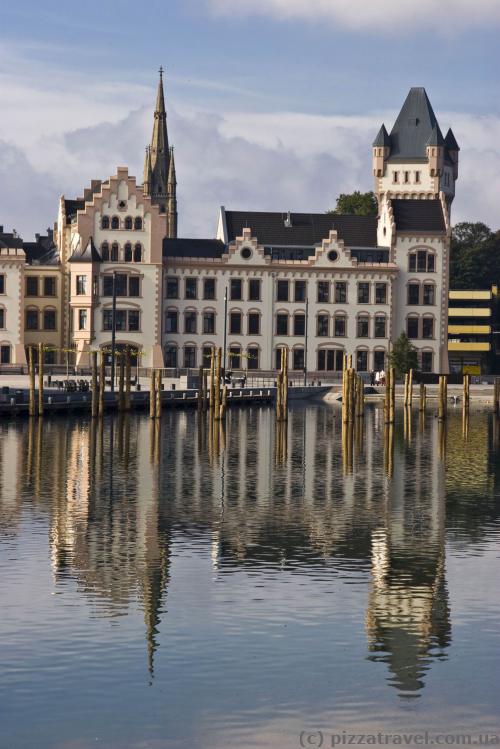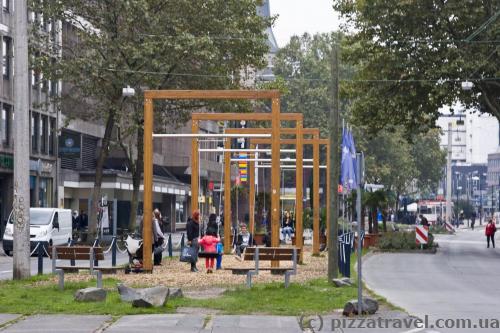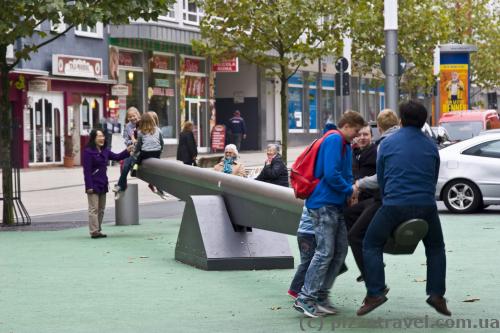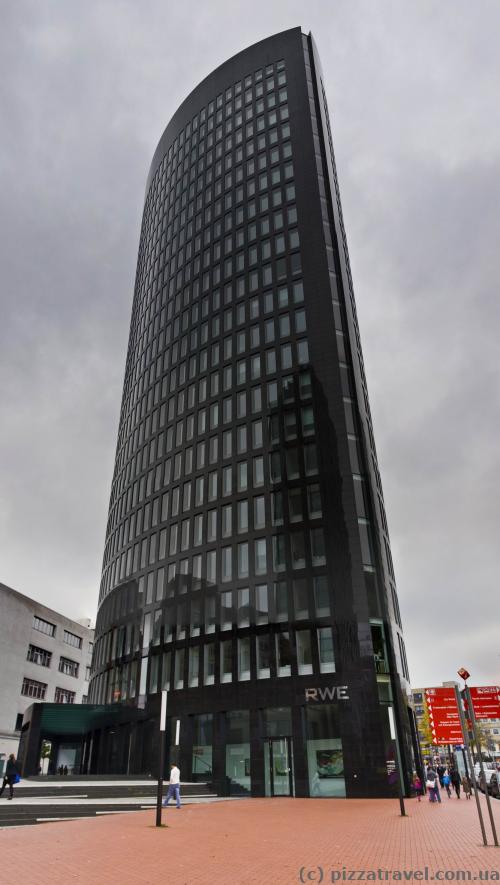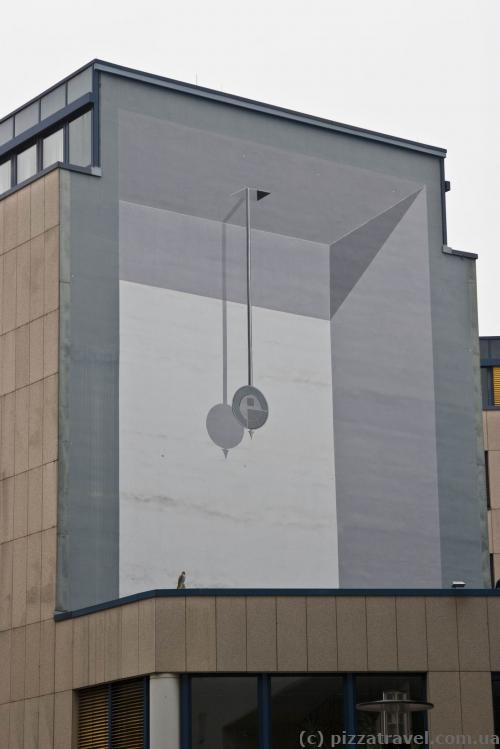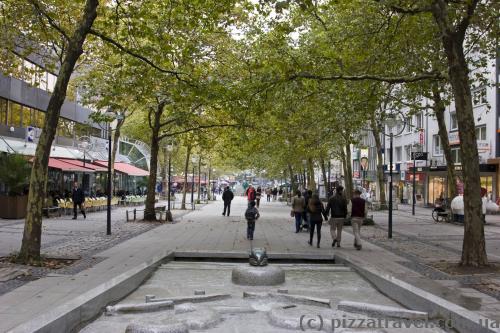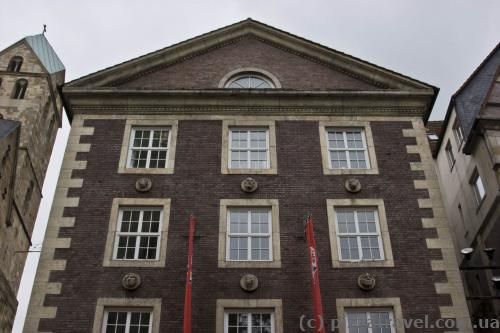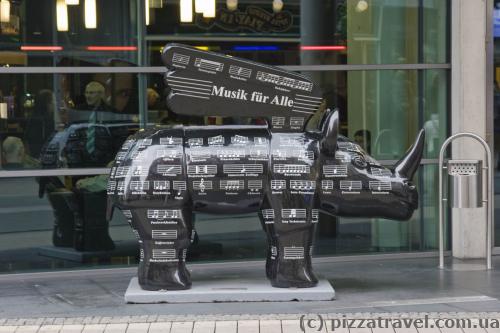According to the "expert opinion" of Internet travelers, Dortmund is not interesting at all. But, as in Düsseldorf, we found what to do here.
Dortmund has one of the best city parks in Germany, Westfalenpark. The park is so beautiful that we wrote a separate article about it. In the same article you can find pictures of Dortmund from the observation deck on the Florianturm Tower.
How an industrial city can attract tourists? It can convert former factories into residential areas, parks and museums. 50 years ago the Ruhr conurbation was the dirtiest in Germany. In 1956, 124.6 million tons of coal was produced here, while the number of workers in the sector reached 494 thousand people. But, with the beginning of the coal and steel crisis, the largest steel plants and mines were closed, and now there's about a dozen of them.
Closed factories and mines were situated almost in the cities. We wrote about the mine museum in Essen. Dortmund also has such mine, but city officials went even further. At the moment an extremely large-scale project of remediation of the land of ThyssenKrupp (world's largest steel producer) is being realized. Because of the crisis many factories were moved to Asia.
After visiting the Westfalenpark, we went through the Hörde exit and continued along the river to the Phoenix Lake. Near the destroyed viaduct we turned right and visited the industrial landscapes, which are located on the former Phoenix West territories.
There is a bicycle and walking path from the plant to the lake, so you won't get lost. And you'll walk along the small Emscher river. For a long time, this canal was used for drainage of industrial waters, and now look how it has changed.
I specially made ??a screenshot of the Phoenix Lake with Google Maps to compare the image when it will be updated.
From 2010 to 2011, the lake was filled with water. Now the area around it became a paradise with luxury apartments, offices, restaurants, and waterfront. This place is worth visiting!
Near the lake there is the Hörde metro station. From there we went to the central station on U41, changed to U47 and moved futher to the Hafen station. Here the port of Dortmund, the largest inland port in Europe, is located. 200 meters from the station you can see a beautiful building of the Port Administration, which was constructed in 1899.
Again by U47 we continued to the DO-Westerfilde end station. There are 2 interesting places in a walking distance from there, the Westhusen Palace (Schloß Westhusen) and Bodelschwingh Castle (Schloss Bodelschwingh). The second one was more interesting, but as the sky was overcast with clouds, we chose Westhusen and left Bodelschwingh for the next time, when the weather would be better.
Westhusen Palace is a 19th-century mansion, a nursing home nowadays.

Path from the DO-Westerfilde station (A) to Schloss Westhusen (B) and Schloss Bodelschwingh (C) ©maps.google.com
Instead of the Bodelschwingh Castle we went by bus #470 from the DO-Westerfilde station in the direction of Oespel to the Haus Dellwig bus stop. There we visted the house on the water, built by Knight Delvig and first mentioned in 1238. The house is beautiful, but it's difficult to make photos because of the trees.
From the Haus Dellwig bus stop you can return by bus #470 back to the DO-Westerfilde station and from there to the downtown by U47. You can get there a little faster by going to the Beguinenstraße stop in the direction of Oespel. There you need to cross the road to the left and find the underground station of S-Bahn. Take the train S4 go to the Dortmund-Dorsfeld station and change to S1, which goes to the central station.
We used this map to walk in the Dortmund downtown.
There are only few old buildings since Dortmund was almost completely destroyed during the war. So it makes sense to pay attention to other interesting things. For example, the city tram which went underground. Now it is hidden under the earth, but, curiously, the old rails remained in the same place. And the Metrotram station looks quite interesting.
Children play right in the center of the city and ride the biggest swing of all that I've ever seen.
Unusual illusionists sit on the streets.
The RWE Tower stands out among the skyscrapers. It is the office of the second gas company in Germany.
The subway building has an interesting drainage system.
Three-dimensional picture on the wall of a house
The Old Market Square in Dortmund is not very interesting.
The Peace Square with the Old and New City Halls is much more interesting. Both City Halls are used and the new one is connected with the old one with a beautiful glass gallery Berswordt-Halle. The original building was constructed in 1899, but was badly damaged during the war and was rebuilt in a simplified form.
In the center of the square stands the Pillar of Peace with word "peace" in different languages.
Of all the churches we went to Petrikirche (XIV c.), since it has the "Golden Wonder of Westphalia", a carved altar from Antwerp (1521) with 633 gold pieces.
One of the most unusual buildings, Arts Center, is the city 's first skyscraper, former headquarters and plant of the Union beer group. The illuminated letter U is visible at night from anywhere and is a symbol of the city. In 1994, the factory was closed, and in 2007 the city authorities decided to transform it into something extraordinary. The building was equipped with the latest technologies, and many huge LED screens appeared on the top of it. The screens show various videos, mostly about nature. Inside there's a tourist center of the Ruhr area, a movie theater for cultural events, the Museum of Modern Art Ostwall, Faculty of Applied Arts University of Dortmund, the European Center for Creative Economy, the Film Association and other organizations. It is the cultural center of the future.
More photos of Dortmund
In 2005, before the World Cup, Dortmund decided to somehow stand out among other cities and copied the idea of Buddy Bears in Berlin, so painted rhinos with wings appeared throughout the city. Any sponsor could create a rhino for 3,000 euros. More than 100 rhinos were put on the city streets. A rhino has perfect hearing, so it is a symbol of Dortmund Philharmonic. And the wings were added to motivate us to conquer new intellectual heights :)
Besides the rhinos, Dortmund managed to "steal" the Buddy Bear :)
In 2019, we visited Dortmund to see the Christmas market and the highest Christmas tree in Germany. Top view of the square opens from the shopping center GALERIA Karstadt Kaufhof.
Getting there: Dortmund is located in the most populated area of Germany, so you can easily reach it either by train or by plane.









